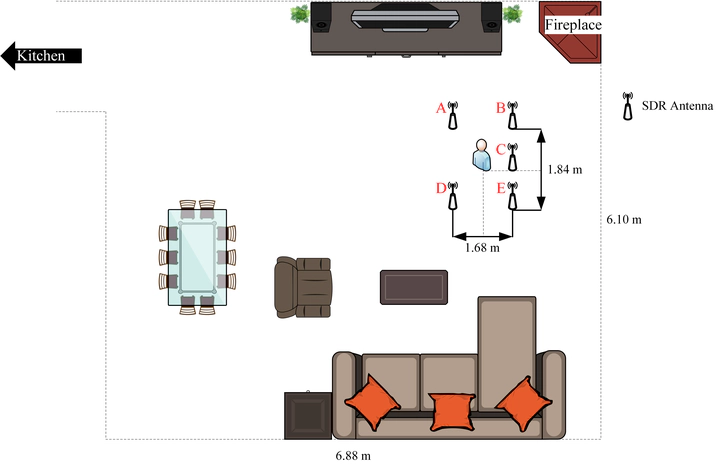
Abstract
Human sensing is significantly improving our lifestyle in many fields such as elderly healthcare and public safety. Research has demonstrated that human activity can alter the passive radio frequency (PRF) spectrum, which represents the passive reception of RF signals in the surrounding environment without actively transmitting a target signal. This paper proposes a novel passive human sensing method that utilizes PRF spectrum alteration as a biometrics modality for human authentication, localization, and activity recognition. The proposed method uses software-defined radio (SDR) technology to acquire the PRF in the frequency band sensitive to human signature. Additionally, the PRF spectrum signatures are classified and regressed by five machine learning (ML) algorithms based on different human sensing tasks. The proposed Sensing Humans among Passive Radio Frequency (SHAPR) method was tested in several environments and scenarios, including a laboratory, a living room, a classroom, and a vehicle, to verify its extensiveness. The experimental findings demonstrate that the SHAPR system, in conjunction with the random forest (RFR) algorithm, achieves human authentication accuracies of 95.6 % and 98.7 % in laboratory and living room scenarios, respectively. In a vehicular setting, grid-level localization accuracy reaches 99.1 %, and in a laboratory environment, activity recognition accuracy is attained at 99.1 %. Moreover, within a classroom scenario, the SHAPR system, when integrated with the Gaussian process regression (GPR) model, can realize coordinate-level localization with an error margin of merely 0.8 meters. These results indicate that the SHAPR technique can be considered a new human signature modality with high accuracy, robustness, and general applicability.